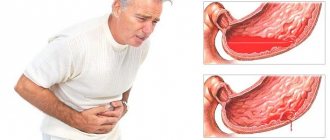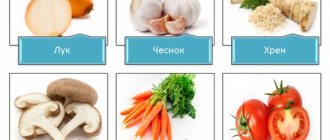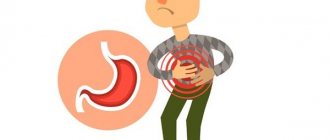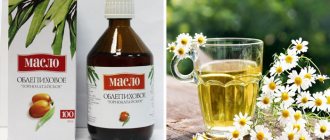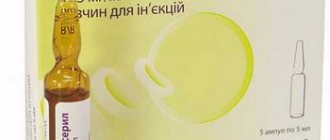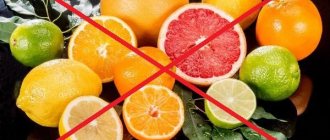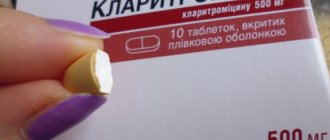Vegetarianism involves eating a lot of vegetables and fruits. More and more people are interested in proper nutrition and a healthy lifestyle. Vegetarianism is one of the ways to maintain beauty and longevity, as well as a way to feel healthy and vigorous. Eating the right foods has a positive effect on physical and psychological health, and almost all vegetarians are versatile and interesting individuals. Vegetarianism for gastritis also has its place, but how well does this affect human health? Vegetarianism for gastritis with high acidity requires adherence to a special menu, which will be described in detail below.
How to prevent the disease?
To prevent the development of stomach and intestinal diseases, it is necessary to adhere to the rules of dietary nutrition and medication therapy. It is imperative to stop drinking alcoholic beverages and smoking. It is recommended to undergo sanatorium-resort treatment. If diseases of the abdominal cavity and gastrointestinal tract occur, you should immediately contact a specialist. If symptoms of intestinal inflammation reoccur, you need to go to your doctor and adjust your treatment.
Recommended Diet
The goals of such nutrition with the simultaneous development of gastritis and stomach ulcers are:
- elimination of the inflammatory process;
- promoting the healing of ulcers;
- normalization of motor and secretory function of the affected organ and intestines;
- eliminating or neutralizing the influence of aggressive chemical and thermal irritants on the organs of the digestive system.
The chemical composition of dishes according to such a diet should contain:
- approximately one hundred grams of protein - 60% of which must be of animal origin, the rest - of plant origin;
- fat – no more than 100 grams. The third part is plant, the rest is animal;
- carbohydrates not less than 400, but not more than 450 g;
- table salt - strictly twelve grams;
- permitted liquid - two liters.
These figures are calculated for one day. The weight of the daily diet should not exceed three kilograms, and the energy value of the dishes is approximately three thousand kilocalories.
In addition, the diet for gastritis and stomach ulcers requires the implementation of several rules, including:
- consumption of food only at room temperature. It is worth minimizing the intake of very hot or cold drinks and dishes;
- Food preparation should be carried out only using gentle methods. Dishes should be steamed, boiled, baked or stewed. Also, during cooking, you should ensure that a rough crust does not form. If this is unavoidable, then it must be cut off;
- avoiding overeating. This can be helped by split meals in small portions six times a day. It is very important that the last meal is taken at least two hours before bedtime;
- thorough chopping and chewing of food. This will help protect the affected organ from the negative effects of rough food.
Patients should not expect positive effects from nutritional therapy if they continue to lead an unhealthy lifestyle. It is for this reason that before prescribing treatment for gastritis and ulcers, it is necessary to give up addiction to alcoholic beverages and smoking.
Causes
Experts identify the main reasons that cause gastritis of the duodenum:
- long-term consumption of unhealthy food, stress, chronic diseases, abuse of bad habits;
- food poisoning, impaired blood circulation in the intestinal area, inflammation of the gallbladder and pancreatic tumor;
- Helicobacter pylori;
- if the intestines have reduced tone of its walls, this is due to the presence of adhesions and scars, which provokes a slow passage of food;
- long-term use of certain medications.
What symptoms indicate that you need to see a doctor?
According to the National Bureau of Statistics, the cause of about 10% of deaths in Moldova is diseases of the digestive system. Why are these diseases among our main causes of death, and how are things going with this in Europe and the world?
In Moldova, about 80% of deaths in this category are caused by hepatitis and liver cirrhosis. In terms of their incidence rate, Moldova is one of the first in Europe. The reasons are the massive use of pesticides during the Soviet period, insufficient disinfection (the causative agent of hepatitis B is very stable) and alcoholism. If hepatitis B or C is complicated by alcoholism, the risk of cirrhosis increases many times over. Such a patient also usually sees a doctor when the process is already at an irreversible stage.
And peptic ulcer disease is dangerous due to complications that can lead to death. The most dangerous are internal bleeding, malignancy (transformation of an ulcer into a malignant tumor), cholangitis (inflammation of the bile ducts), etc.
What types of diseases do you encounter most often?
Various forms of gastropathy, peptic ulcer and their complications - colitis, varicose veins of the esophagus, benign and malignant formations and others.
What, besides alcohol, provokes diseases of the digestive system?
Dangerous factors, in addition to alcohol abuse, include poor diet, smoking, stress, frequent use of anti-inflammatory drugs, chronic diseases, and hereditary predisposition.
What symptoms should prompt you to see a doctor?
Pain in the gastrointestinal tract, prolonged and repeated bloating and heaviness in the abdomen, heartburn, vomiting, stool disorders, the presence of blood in it. All of these are reasons to immediately consult a doctor and get examined.
Usually, if there are any complaints about digestive problems, doctors immediately send you for a gastroscopy. Isn't it being abused in Moldova? After all, this is a rather painful and unpleasant procedure.
Gastroscopy allows you to study the problem in more detail and make the correct diagnosis, and in some cases, detect the early stage of cancer. Treatment prescribed taking into account the results of gastroscopy will be more correct.
From my own experience, I know that many people are afraid of this procedure not only because of the discomfort, but also because they may get some kind of infection in this way. I can confidently say that modern methods of equipment disinfection completely kill viruses and their traces. As for discomfort, gastroscopy, if necessary, can be performed under local or general anesthesia.
Is capsule gastroscopy practiced in Moldova?
Yes, but only in private medical institutions. This procedure is painless - you just need to swallow a capsule with a camera (they are disposable), but very expensive - about €600. This procedure is good because it allows you to see the so-called “blind spots”, for example, the small intestine, which cannot be reached during gastro- and colonoscopy. But if this camera sees something dangerous, you will have to do a regular gastroscopy with a biopsy.
Is it worth doing gastroscopy for preventive purposes?
Yes, it's worth it. If we are talking about young people and people who do not have a hereditary predisposition, it can be done once every three to five years.
Symptoms
In the initial stage, signs of the disease may be subtle, but at the slightest suspicion you should not delay visiting a doctor who will help to accurately establish the diagnosis. Among the obvious symptoms are:
- lack of appetite, while the patient experiences weight loss, weakness and fatigue;
- stool is disturbed;
- body temperature rises;
- suffer from pain in the stomach, which is accompanied by nausea, turning into vomiting;
- frequent heartburn.
It is necessary to recognize the symptoms in time, and then treatment should follow in a timely manner.
Important! There is no need to self-medicate, since eliminating the symptoms will not get rid of the disease, and the patient’s condition will worsen every day.
Laboratory and instrumental diagnostics
The main method of examination for this disease is FGDS or, as patients call it, a probe. When performing an FGDS, the doctor first macroscopically evaluates the surface defects of the mucous membrane, their size, quantity, and maturity.
Conducts differential diagnosis of defects from ulcers, oncopathology by taking a biopsy and subsequent microscopic examination of the biopsy and smears.
By taking a biopsy, rapid tests can be performed to detect Helicobacter as a causative pathological factor.
In addition to FGDS, the doctor recommends that the patient undergo the following laboratory and instrumental diagnostic methods:
- X-ray examination
Carrying out double contrast using a certain technique makes it possible to identify small round defects with a diameter of up to 3 mm with a small accumulation of radiopaque substance in the center.
In the blood, a decrease in the content of red blood cells and hemoglobin, a low color index, hypochromia of red blood cells, and a decrease in iron levels may be observed.
In a biochemical analysis, the content of total protein, bilirubin, aminotransferases, urea, creatinine, and iron must be examined.
- Fecal occult blood test
Using special rapid tests, the analysis allows you to identify bleeding without obvious clinical symptoms - hidden.
Treatment
If the disease is not treated for a long time, the patient experiences a disruption in the secretion of enzymes necessary for the digestive function, as well as a deterioration in the breakdown of food and the absorption of nutrients from it. In addition, the development of gastrointestinal pathologies is observed. Thus, the patient may develop anemia, micronutrient deficiency, diseases of the muscular, nervous, cardiovascular systems and vitamin deficiency.
Only a specialist can prescribe therapy after a detailed study of the symptoms and special diagnostics. Usually, doctors refer the person suffering from the disease to endoscopy, x-ray, ultrasound of the abdominal cavity, analysis of gastric juice, and check for the presence of Helicobacter pylori. If a specialist suspects that the disease is due to an autoimmune etiology, the patient undergoes an antibody test.
Comprehensive treatment includes medication and physiotherapy, as well as special nutrition. Drug treatment includes:
- If the disease occurs in an acute or aggravated form, first of all, the doctor prescribes antacids to relieve pain.
- Increased acid secretion can be reduced with the help of antisecretory drugs (Omeprazole, Almagel).
- To improve motor skills and prevent further development of the disease, the patient should use prokinetics and gastroprotectors (Maalox, Domperidone).
- If the bacteria that caused the disease is identified, they resort to a course of antibiotics.
- Enzyme preparations prevent undigested food from entering the intestines (Creon).
- To relieve pain, use antispasmodics (Papaverine, No-shpa).
- Enterosobrents can reduce the negative impact on the gastrointestinal tract (Smecta, Enterosgel).
- Dopamine blockers (Cerucal, Reglan) will help relieve nausea.
- Anti-inflammatory drugs with a healing effect are used (vitamin B, Methyluracil).
- Often, neurasthenia appears against the background of the disease; in order to suppress it, sedatives are taken (valerian, motherwort tincture).
Compliance with the rules of taking medications and dietary nutrition will help cope with the disease
Among the physiotherapeutic procedures, the most popular are warming, ultrasound, paraffin, balneotherapy, ozokerite, application, electrosleep, magnetic therapy. When using these methods, the patient’s blood supply and lymph flow are activated, digestion is normalized and an anti-inflammatory effect is guaranteed.
ethnoscience
When treating duodenitis, you can use folk advice, which reduces the aggressiveness of stomach acid and protects the inflamed mucosa. Aloe, propolis, sea buckthorn oil, potatoes, medicinal herbs, and honey are often used for this. Useful recipes:
- Squeeze out 0.5 kg. aloe leaves juice, add 0.5 liters to it. red wine and 0.5 kg. honey, let the “potion” brew for 10 days, and then filter and bottle. Store the drink in the refrigerator. During the first week, the product is consumed 1 tsp. three times a day before meals. The next two weeks the volume increases to 1 tbsp. l., and in the fourth week you need to return to the original dosage again. The course of treatment is three months, for superficial duodenitis 1.5 months.
- 50 gr. propolis should be poured 500 ml. alcohol, put in a dark place for 20 days. Every day you need to shake the contents of the bottle. The course of treatment is three weeks, 15 drops in previously steamed flax seeds, on an empty stomach.
- Potato juice should be fresh; drink 0.5 cups after a meal.
- Sea buckthorn oil is consumed 1 tsp. once a day during meals. The course lasts until complete recovery.
- Every day the patient should eat 100 - 200 grams. honey, dividing this dosage throughout the day in small portions.
It should be noted that if the disease occurs against the background of other diseases, the underlying disease is treated first.
Traditional recipes for the treatment of gastritis relieve the tension of the disease
Recipes and cooking methods
All dishes are prepared either steamed or boiled. The following are recipes for some popular dishes:
- Boiled rice soup . The rice is thoroughly washed and cooked over low heat until fully cooked. Next, filter through a sieve, beat in 1 egg, 10 g of butter, pour boiling water over it, add a little salt and cook over low heat for 15 minutes. Boiled chicken and greens are added to the soup.
- Zucchini in a pot . Zucchini, pumpkin and carrots are cut into cubes, added to a bowl, combined with salt, vegetable oil and herbs, and kneaded thoroughly with your hands. Cow cheese cubes are also added there, then kneaded again. The mixture is placed in pots and baked in the oven for 60 minutes.
- Cream of broccoli and cauliflower soup . Broccoli and cauliflower are thoroughly boiled in salted water. Then drain off the excess water, leaving a little at the bottom. Using a blender, puree the mixture, add warm cream (1 tablespoon per 1 serving). For taste, you can add a piece of steamed salmon or trout.
- Vermicelli with cheese . Boil the vermicelli until tender, grate the cheese on a fine grater, and finely chop the herbs to taste. Place the pasta on a plate and sprinkle with cheese and herbs, then place in the oven until the cheese melts.
- Fish soufflé . 200 g of fish fillet is lightly boiled in salted water, then passed through a meat grinder or blender (you can simply knead it well with your hands). Then add a little butter, 1 egg, form cutlets and leave in the oven for half an hour.
The principles of nutrition for any diseases of the gastrointestinal tract must also take into account the characteristics of metabolic processes in the body, namely carbohydrate-fat metabolism. During the period of remission with ulcerative-erosive gastritis, some relaxations are possible, which should be checked with a nutritionist-gastroenterologist.
Diet
In complex therapy, proper nutrition is of great importance, which should be balanced and fortified. The patient should eat all meals only at a gentle temperature, and avoid fatty, fried, salty and seasoned foods. The patient’s daily diet depends on the characteristics of the disease:
- The acute form forces you to give up alcoholic beverages, cigarettes, canned food, sour and fresh juices, and baked goods made with yeast;
- In case of the erosive form, the menu should include mucous puree soups and porridges prepared with milk. It is allowed to eat lean meat and lean fish, which should be boiled or steamed. Peaches, apples, pears, and bananas will saturate the body. You can make jelly, jelly, compote from these fruits.
What to eat for gastritis with erosions
The menu for erosive gastritis is divided into two types - for acute and chronic erosion. During an exacerbation, they eat pureed, liquid dishes. It is allowed to expand the menu as soon as the inflammation begins to subside.
List of products allowed for erosive gastritis:
- lean types of fish and meat;
- broths;
- dairy drinks, fresh cottage cheese, mild and low-fat cheese;
- zucchini, potatoes, carrots, beets;
- pasta;
- cereals, excluding millet and pearl barley;
- fruits - watermelons, sweet grapes, baked apples and pears.
Harmful foods and dishes include those that include simple carbohydrates. These elements have a destructive effect on the affected organs of the digestive tract.
The diet for erosive gastritis of the stomach changes with the course of the disease. However, even during periods of calm, you need to build your menu, excluding fatty, salty, smoked and other unhealthy dishes.
Diet No. 1 (Table No. 1). Food
What can you eat on diet number 1:
Soups: vegetable soups (from permitted pureed vegetables) in carrot or potato broth, dairy soups from pureed or well-cooked cereals, pureed soups (from pre-cooked permitted meat). You can season soups with butter, cream or egg-milk mixture.
Cereals: oatmeal, buckwheat, rice, semolina. Cook porridge in water or milk, semi-viscous and mashed. You can also steam soufflés, puddings and cutlets from ground cereals. Boiled pasta, finely chopped.
Vegetables, greens: potatoes, beets, carrots, cauliflower, early pumpkin and zucchini. Green peas limited. Vegetables can be steamed or boiled in water. Ready to grind (mashed potatoes, puddings, soufflés). Finely chop the dill and add to soups. The consumption of ripe non-acidic tomatoes is also allowed, but not more than 100 g.
Meat, fish: lean varieties, without tendons, fascia and skin in poultry and fish. Boiled and steamed dishes from veal, beef, young lean lamb, chicken, chicken, turkey, tongue and liver. Boiled meat and fish can be baked in the oven.
Eggs: 2-3 eggs per day (soft-boiled or steamed omelet).
Fresh fruits and berries: sweet fruits and berries pureed, boiled and baked.
Dairy products: milk, cream, non-acidic kefir and yogurt, fresh and non-acidic sour cream and pureed cottage cheese. Hard cheese is mild and grated. Sour cream in limited quantities.
Sweets: fruit purees, jelly, jellies, mousses, meringues, butter cream, milk jelly, honey, non-sour jam, marshmallows and marshmallows.
Flour products: wheat bread made from premium and 1st grade flour (dried or yesterday), dry biscuit, dry cookies. 1-2 times a week, well-baked savory buns, baked pies with apples, cottage cheese, jam, boiled meat, fish, eggs.
Fats: butter, cow's ghee (highest grade), refined vegetable oils in dishes.
Drinks: weak tea, tea with milk or cream, weak coffee with milk, weak cocoa, fruit compotes, freshly squeezed juices from sweet fruits and berries, rose hip decoction.
What not to eat on diet number 1:
- any broths and sauces based on them (meat, fish, mushroom), strong vegetable broths, okroshka, cabbage soup, borscht;
- fatty meats, poultry and fish, stringy varieties, duck, goose, salted fish, smoked meats, canned food;
- white cabbage, turnips, radishes, rutabaga, sorrel, spinach, onions, cucumbers, mushrooms, salted, pickled and pickled vegetables, canned vegetables;
- fresh bread, rye, butter and puff pastry;
- legumes, whole pasta, pearl barley, barley and corn, millet;
- dairy products with high acidity, salty and sharp hard cheeses, limited use of sour cream;
- sour, not fully ripe, fiber-rich fruits and berries, unprocessed dried fruits, ice cream, chocolate;
- black coffee, all carbonated drinks, kvass;
- tomato sauces, mustard, pepper, horseradish.
General menu rules
The patient should follow a special careful diet during exacerbation of gastritis and gastric ulcer.
Recommendations for chronic or acute gastritis:
- do not eat fatty and fried foods;
- food of very high and low temperatures is prohibited;
- Steam processing of products is preferable;
- eat in portions of up to 200 g 5 times a day;
- drink more water.
Doctors divide diets for gastritis with high acidity and low acidity. This indicator suggests the presence of hydrochloric acid in the gastric juice.
To maintain balance, you need to follow a special diet.
Nutrition with low acid levels
The goal is to increase the secretion of gastric juice. Products should not irritate the walls of the gastrointestinal tract.
- stale and dried rye bread;
- cereals - buckwheat, rice, oatmeal, except pearl barley;
- pasta;
- lean varieties of meat and fish;
- vegetable soups;
- soft-boiled eggs, omelet;
- boiled and baked vegetables (except those prohibited);
- herbal teas.
- fresh baked goods, hot yeast products;
- seasonings;
- okroshka and dishes made from sour foods;
- vegetables - cucumbers, onions, radishes;
- hard boiled eggs;
- berries with seeds;
- kvass, grape and cranberry juice;
- alcohol.
Menu for high acidity
Typically, such nutrition involves eating food that does not increase the secretion of gastric juice and is easily digested. For gastritis with high acidity, the doctor develops a special diet.
- dairy products;
- white dry crackers;
- vegetable and butter;
- soups with meat and chicken broth;
- omelettes, eggs boiled in a bag;
- compotes and fruit jellies.
- fatty foods;
- raw vegetables and marinades;
- black bread;
- carbonated drinks;
- various smoked meats.
Diet No. 1 (table No. 1): menu for the week
Diet No. 1 is varied and healthy. Below is a sample menu for the week.
Food must be cooked in crushed or pureed form, boiled in water, steamed or baked. The food consumed must be warm (very hot and cold are excluded).
Monday
Breakfast: steam omelette, milk semolina porridge, tea with cream. Lunch: rose hip decoction. Lunch: potato soup, chicken fillet, boiled carrots. Afternoon snack: cottage cheese with fruit. Dinner: mashed potatoes and milk, steamed fish, green tea. Before bed: milk.
Tuesday
Breakfast: pumpkin porridge with milk, weak cocoa. Lunch: sweet fruits. Lunch: cauliflower soup, boiled carrot salad, compote. Afternoon snack: jelly. Dinner: pasta with grated cheese and boiled beef with cream sauce, tea with milk. At night: grated peach with cream.
Wednesday
Breakfast: soft-boiled eggs, rice milk porridge (ground), weak coffee with cream. Lunch: fruit salad with cream and jam. Lunch: vegetable milk soup, boiled fish with vegetables, compote. Afternoon snack: pastila. Dinner: buckwheat porridge, boiled turkey meatballs, boiled vegetables, tea with milk. At night: green tea with milk.
Example menu
In order to reduce inflammation and normalize the functioning of the digestive tract, patients with diagnoses such as gastritis and gastric ulcers are advised not only to know what they should not eat, but also to plan their diet in advance. The menu for the week, as well as for the day, should include dishes that do not create unnecessary stress on digestion and provide the body with nutrients and beneficial microelements.
Below are dishes that are recommended for consumption in case of pathologies of the digestive system. When creating a menu, you can vary them throughout the week.
If you have a peptic ulcer, you can use jelly
Monday Tuesday
- Breakfast. Oatmeal with the addition of a small amount of natural honey and dried fruits, a rosehip drink without sugar, or jelly is a drink that can be consumed even in the acute stage.
- Lunch. Casserole made from fruits, cottage cheese and cereals.
- Dinner. Meatball soup based on vegetable broth, a small piece of whole grain bread, or day-old white bread. Compote or jelly.
- Afternoon snack. Puree any vegetables and a small amount of minced meat.
- Dinner. Turkey, potato and tomato stew, herbal tea.
- Second dinner. A glass of kefir.
Wednesday Thursday
- Breakfast. Sticky rice porridge, boiled to the consistency of jelly, herbal tea.
- Lunch. Two slices of stale bread, two pieces of low-fat cheese, compote.
You can use hard pasta to make the casserole.
- Dinner. Fish soup with potatoes, beet salad, jelly.
- Afternoon snack. Apples baked with honey.
- Dinner. Casserole of durum pasta and a small amount of cheese.
- Second dinner. A glass of curdled milk.
Friday Saturday
- Breakfast. Oatmeal with vegetable oil and dried fruits, compote.
- Lunch. Fresh low-fat cheese, whole grain bread.
- Dinner. Sauerkraut cabbage soup, stewed vegetables, jelly.
- Afternoon snack. Cheese casserole.
- Dinner. Steamed cutlets, carrots stewed in milk, herbal tea.
- Second dinner. Yogurt.
Oatmeal with dried fruits is perfect for breakfast with gastritis and ulcers
Sunday
- Breakfast. Oatmeal with bananas, herbal tea, a slice of cheese.
- Lunch. Stewed potatoes with carrots.
- Dinner. Fresh cabbage borscht, steamed cutlets, jelly.
- Afternoon snack. Cottage cheese casserole with peaches.
- Dinner. Veal meatballs, boiled potatoes, herbal tea.
- Second dinner. A glass of kefir.
In addition to following a diet, one should not forget about the drinking regime. It is recommended to consume the optimal amount of water necessary for full functioning. It is advisable to exclude tea, coffee, cocoa or consume it in minimal quantities. The diet must be complete, containing a sufficient amount of calories, since the therapeutic diet is not a diet for weight loss, and its main goal is to restore and normalize the function of the digestive tract.
Nutrition for stomach ulcers will be discussed in the video:
The description is valid on 08.01.2018
- Efficacy: therapeutic effect after 14-21 days
- Terms: 2-6 months
- Cost of products: 1600-1700 rubles. in Week
Duodenal gastritis: symptoms and treatment
Have you been struggling with GASTRITIS and ULCERS for many years without success?
“You will be amazed at how easy it is to cure gastritis and ulcers just by taking it every day.
Gastritis is one of the most common diseases of the digestive system, which is characterized by inflammation of the mucous surface of the gastrointestinal tract. In this case, we are talking about an inflammatory process that affects the duodenal mucosa.
In the case of erosive damage to the intestinal mucosa, they speak of the development of duodenitis gastritis or gastroduodenitis. Gastritis of the duodenum very rarely acts as an independent disease - most often the inflammatory process develops against the background of another pathology of the digestive system.
How to understand that you have an ulcer or gastritis
The symptoms of gastritis and ulcers are often very similar, and only a doctor can determine which disease you have.
We would like to note first of all the symptoms that you need to pay attention to:
- pain in the upper abdomen, often after eating;
- heaviness in the stomach; nausea and vomiting;
- lack of appetite; belching;
- flatulence; weight loss;
- unpleasant taste in the mouth;
- stool disorders; frequent feeling of thirst.
It is believed that by carefully analyzing the nature and frequency of pain, one can assume a particular disease. For example, pain that begins a few hours after eating may indicate the presence of gastritis, while pain from an ulcer usually begins much faster - after about an hour.
The symptoms of gastritis and ulcers are often very similar, and only a doctor can determine which disease you have.
Ulcers are also characterized by exacerbation in autumn and spring, and exacerbations of gastritis are in no way related to the time of year. It is also believed that ulcers can appear at night, while gastritis only bothers you during the day.
What is gastritis and how to treat it
Gastritis is an inflammatory process of the gastric mucosa. The cause of gastritis can be a malnutrition, an incorrectly chosen diet, a love of hot and spicy foods, various infections, taking certain medications for a long time, alcohol or severe stress.
As a rule, to diagnose gastritis, a fibrogastroscopic examination is performed, in which the walls of the esophagus, stomach and duodenum are examined using a special microcamera. Additional tests may also be needed to clarify the diagnosis. Gastritis is treated with diet, antibacterial therapy and drugs that restore the acidity of gastric juice and the gastric mucosa.
What is an ulcer and how to treat it
Peptic ulcer is a chronic disease in which defects – ulcers – form on the mucous membrane of the stomach and duodenum. The causes of ulcers are considered to be stress, poor diet, long-term use of certain medications, alcohol, smoking and heredity.
If the ulcer is not treated promptly, it can spread deep into the stomach wall and cause life-threatening complications. To make a diagnosis, a fibrogastroscopic examination is performed, as well as an x-ray, biopsy and analysis of gastric juice.
Treatment for ulcers is usually complex and includes a certain daily and nutritional regimen, taking antibiotics and special medications. In rare cases, surgery may be necessary.
Causes of the disease
In most cases, gastritis of the duodenum is formed against the background of another disease of the gastrointestinal tract - gastritis of the gastric mucosa, pancreatitis, cholecystitis.
Other factors also influence the development of inflammation:
- Various pathologies of the gallbladder.
- Neoplasms in the pancreatic cavity.
- Failure of blood circulation in the gastrointestinal tract.
- An infection caused by the bacterium Helicobacter pylori.
- Decreased muscle activity of the intestinal walls.
- Food poisoning.
- Long-term use of certain medications, such as non-steroidal anti-inflammatory drugs.
An important role in the development of gastritis of the duodenum is played by poor nutrition. Frequent consumption of fried, fatty, smoked, pickled foods, strong black coffee, alcoholic beverages, as well as a love of smoking can provoke the development of an inflammatory process in the cavity of the duodenum.
Stages of the disease
Gastritis of the duodenum can occur in an acute or chronic stage. The acute form of the disease develops at a rapid pace - its main causes can be food poisoning, consumption of spicy or poor-quality food.
Chronic gastritis in most cases develops against the background of other pathologies of the digestive system, and is characterized by the occurrence of bleeding erosions on the mucous surface of the duodenum, which can ultimately lead to complete tissue atrophy.
About diets, dietary supplements and vegetarianism
How often do you see bulimia, anorexia and other types of eating disorders in your practice?
Not very often. And these diseases, rather, can be classified as psychological, and they need to be treated together with a psychiatrist. Simple drug treatment in this case will only cure the symptoms, but will not remove the problem that is in the patient’s head.
Nowadays, various methods of detoxifying the body are popular - using special diets, fasting, etc. Doesn't this harm the body?
Newfangled techniques, which are becoming more and more numerous, cannot be universal. Each person’s body is individual, and what suits one may harm another. It is necessary to take into account individual characteristics, conduct tests and develop an individual diet depending on goals and capabilities. The body is able to eliminate toxins on its own, more safely and effectively, for example, with the help of water and exercise.
How does vegetarianism, which is also becoming increasingly popular, affect the functioning of the gastrointestinal tract and the entire body? Can plant protein completely replace meat products? Were there people among your patients whose problems were related specifically to vegetarianism?
In my practice there were few such people. But again, everything is individual. There are people whose bodies are lactose or gluten intolerant; they need to create a special diet. But if you decide to radically change the type of diet, you should keep this process under the control of specialists so as not to harm your body.
What types of weight loss diets can be considered safe for health? And how often in your practice do you encounter the consequences of fasting for weight loss?
I practice my own weight loss method, which I tested myself. Before going on a diet, it is necessary to take certain measurements: the percentage of water, muscle mass and fat in the body, and pass general tests. During the diet, you must eat well, getting the required amount of proteins, fats and carbohydrates and, of course, combine this with a set of workouts.
Training is also individual and depends on your goals. Let's say you want to build muscle, but you go to the gym and just run on the treadmill. In this case, you will not see significant changes, because the loads are on the wrong muscle groups. Or you want to lose weight as quickly as possible and completely exclude meat and other supposedly “heavy” foods from your diet.
Is it possible to trust athletic bloggers in choosing a diet and eating regimen, of which there are a lot and who, using their example, advise everything from chia seeds to dietary supplements? Can there even be universal advice on “how to eat to be slim and healthy”?
No one has yet won the debate between a balanced diet without fitness supplements and sports nutrition; research is ongoing, so loud headlines and conclusions are still awaiting us. Apparently, people can do without special foods if they eat a varied diet. But sports supplements will not cause harm if you do not exceed the recommended dosages and buy from a trusted manufacturer.
But chickpeas should be noted that the entire range of substances necessary for building the body of your dreams can be obtained from food by combining them correctly. You can combine this with vitamins and sports nutrition, but the latter cannot change anything. Complete treatment with dietary supplements or a beautiful and healthy body only through supplements, without proper nutrition, is also impossible. You see, they haven’t yet come up with such a universal pill that you take it and that’s it: healthy and beautiful.
Vegetarianism is a complete rejection of animal products. The condition for switching to the stated nutritional system is considered to be good human health and age over 25 years. When deciding to take such a step, it is recommended to undergo a consultation and examination with a gastroenterologist; gastritis and peptic ulcers will be contraindications for a vegetarian diet. A possible transition to vegetative nutrition is possible when signs of disease are completely excluded.
There are cases where the symptoms of gastritis disappeared after switching to vegetarianism. The process depends on the individual characteristics of a particular organism and the signs of the disease (acidity level, what type of gastritis, stage of the disease, acute or chronic form).
During gastritis or ulcers, it is useful to have a fasting day, preferably with oatmeal, which is cooked in water. It is possible to unload in this way at the time of exacerbation of diseases - the benefits of oatmeal are difficult to overestimate, especially when it comes to the digestive organs.
With such unloading, active cleansing of the intestines occurs and digestion is optimized. But consultation with your doctor is required.
Symptoms of gastritis
If we talk about a disease such as gastritis of the duodenum, its symptoms and treatment can be very diverse, depending on the root cause of the disease. In some cases, the initial stages of inflammation may not be accompanied by severe symptoms.
With the active development of the disease, the symptoms become more and more pronounced.
The main symptoms of gastritis include:
- Weakness, lethargy, apathy.
- Deterioration of appetite up to its complete absence, which can lead to a sharp decrease in body weight.
- Nausea, vomiting, pain in the stomach.
- Stool disorders.
- In some cases, a sharp increase in body temperature is possible.
The chronic form of the disease is often accompanied by bloating, heartburn, constant belching, a general deterioration in health and a decrease in the level of immunity.
Prognosis and prevention
With timely and proper treatment, compliance with the diet prescribed by the doctor, and a healthy lifestyle, gastritis and duodenitis do not cause serious complications (fistulas, bleeding, ulcers). After a course of therapy and the onset of incomplete remission, repeat gastroscopy is usually not needed (if there were no ulcers). The prognosis is favorable if the histology is without atrophy or metaplasia.
In the chronic form, exacerbations are possible, including seasonal ones. Therefore, if your health condition worsens, it is necessary to immediately exclude physical activity (especially in the abdominal area), repeat an FGDS and a course of medications. Prophylactic seasonal therapy is recommended even in the absence of symptoms. The result will be complete remission in a couple of years.
